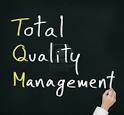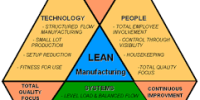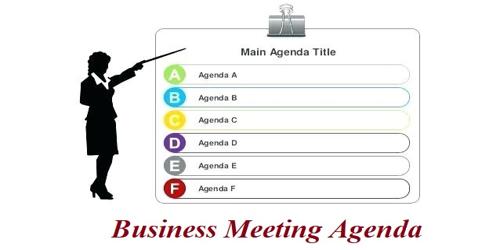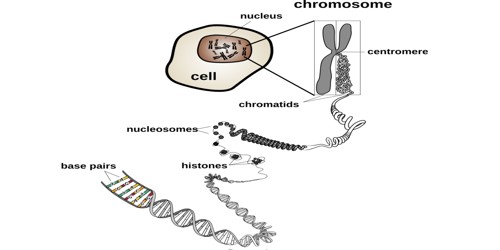The TQM implementation process begins with senior management and, most important, the CEO’s commitment. The importance of the senior management role cannot be overstated. Leadership is essential during every phase of the implementation process and particularly at the start. In fact, indifference and lack of involvement by senior management are frequently cited as the principal reasons for the failure of quality improvement efforts. Delegation and rhetoric are insufficient involvement is required.
Since World War 11, the Japanese have been very successful using the American ideas for total quality improvement they learned from Deming and Juran. In the late 1970s Americans became interested in the success of Japanese firms and discovered that their management processes were the cornerstone of that success. Some American companies adopted TQM and applied it successfully, notably Ford Motor Company, Hewlett Packard, Campbell Soup Company, and the Paul Revere Insurance Company. Others were less successful, largely it seems, because they were unable to accomplish the cultural and organizational changes required to implement TQM principles.
Senior management needs to be educated in the TQM concepts. In addition to formal education, managers should visit successful TQM organizations, read selected articles and books, and attend seminars and conferences. The next step is for senior management to develop an implementation plan.
Timing of the implementation process can be very important. Is the organization ready to embark on the total quality journey? There may be some foreseeable problems, such as a reorganization, change in senior management personnel, interpersonal conflicts, a current crisis, or a time consuming activity. These problems may postpone implementation to a more favorable time.
The next step is the formation of the quality council initiation of these duties is a substantial part of the implementation of TOM. The development of core values, a vision statement, a mission statement, and a quality policy statement, with input from all personnel, should be completed first.
The active involvement of middle managers and first line supervisors is essential to the success of the TQM effort. They are accountable for achieving many of the organization’s performance goals and objectives, and they form enduring links in the communication chain from senior management to the front line workers. Without middle management’s early and active support, the TQM effort could fail. Senior management needs to ensure that managers at all levels have an opportunity, as soon as possible, to develop ownership in the TQM effort and a chance to acquire the insight and skills necessary to become leaders. One way to accomplish this concept is to have a retreat. The retreat will focus on TQM training, leadership skills, and active involvement in the development of the organization’s statements.If there is a union, there should be early discussions with the representatives on TQM. Managers should involve union leaders by sheling with them implementation plans for TQM. As the quality effort progresses, managers and union leaders should work together on quality improvement activities.
At this stage of the implementation process, it is important to communicate TQM to the entire organization. Communication is important throughout the implementation stage. Communication is necessary to create TQM awareness interest, desire, and action. Everyone needs to be trained in quality awareness and problem solving. This training is conducted when the employee is placed on a project team or the work group is ready for the training.
Customer, employee, and supplier surveys must be conducted to benchmark the attitudes of these three stakeholders. Information from these surveys provides ideas for quality improvement projects. The quality council determines the quality improvement projects. In addition the council establishes the project teams and work groups and monitors their progress. The organization has to be patient and not rush the teams for solutions that don’t eliminate the root causes. There is often a tendency to rush the implementation process. TECSTAR, a small business, was able to achieve savings of more than $3 million the first year of its TQM program. On the other hand, Karlee, a Malcolm Baldrige
Obstacles
Implementation of TQM is described in the next chapter, on leadership. This section gives information concerning the obstacles associated with implementation.
Many organizations, especially small ones with a niche, are comfortable with their current state. They are satisfied with the amount of work being performed, the profits realized, and the perception that the customers are satisfied. Organizations with this culture will see little need for TQM until they begin to lose market share.
Once an organization embarks on TQM, there will be obstacles to its successful implementation. The first eight most common were determined by Robert J. Masters after an extensive literature search and the last obstacle added by the authors They are given below.
- Lack of Management Commitment
- Inability to Change Organizational Culture
- improper Planning
- Lack of Continuous Training and Education
- Incompatible Organizational Structure and Isolated Individuals And Departments
- Ineffective Measurement Techniques and Lack Of Access
- Paying Inadequate Attention To Internal and External Customers
- Inadequate Use of Empowerment Arid Teamwork
- Failure to Continually Improve
Benefits of TQM
According to a survey of manufacturing firms in Georgia, the benefits of TQM are improved quality, employee participation, teamwork, working relationships, customer satisfaction, employee satisfaction, productivity, communication, profitability, and market share.
TQM is a good investment as shown by a ten‑year study by Hendricks and Singhai. They showed that there is a strong link between TQM and financial performance. The researchers selected a group of 600 publicly traded organizations that had won awards for effectively implementing TQM. They then selected a control group similar in size and industry to the award winners. Performance of both groups was compared during the five years prior to the award and five years after winning the award. No difference was shown between the two groups prior to the award. However, as shown below the award group far outstripped the control group during the five‑year period after the award.
| Description | Control | Award |
| Growth in Operating Income | 43% | 91% |
| Increase in Sales | 32% | 69% |
| Increase in Total Assets | 37% | 79% |
The study also showed that stock price performance for the award winners was 114% while the S&P was 80%. In addition, the study showed that small organizations out performed larger organizations. Recent studies have shown that only about 30% of manufacturing organizations have successfully implemented TQM.
















